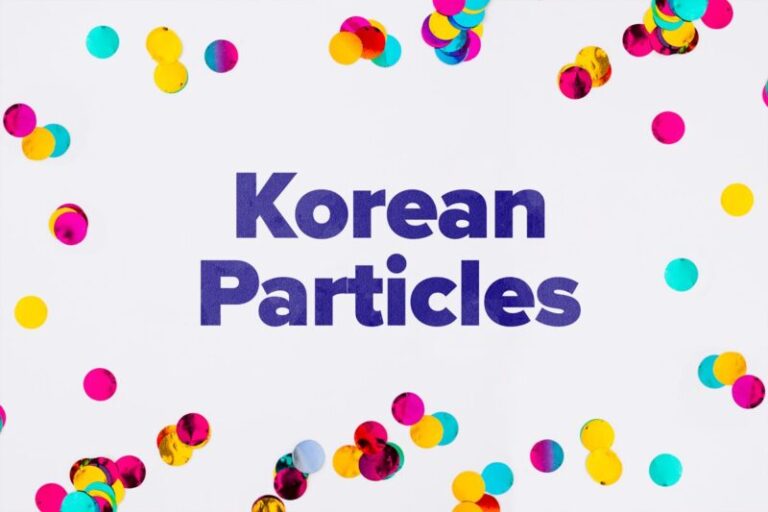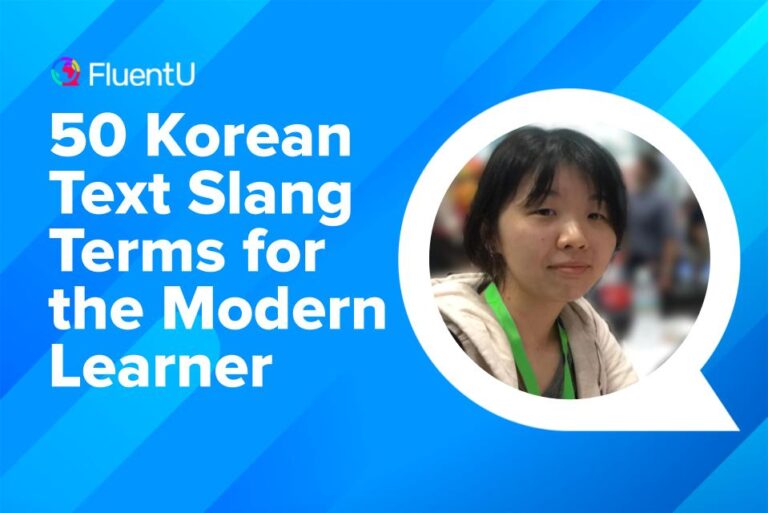Korean Sentence Structure and Word Order Patterns

As a Korean language learner, you’re constantly working towards making your own sentences properly. Well, it’s time to level up your power to do so.
The basic Korean sentence structures are Subject-Object-Verb (SOV), Subject-Verb (SV) and Subject-Adjective (SA). This means that a regular Korean sentence will look something like “I pizza ate” instead of “I ate pizza.”
We’ll go over these in detail, plus show you how to use Korean particles, like topic, subject and object markers.
Download: This blog post is available as a convenient and portable PDF that you can take anywhere. Click here to get a copy. (Download)
Most Important Korean Sentence Structures
Subject-Object-Verb (SOV)
Most Korean sentences are made with the Subject-Object-Verb (SOV) pattern. This means you introduce the subject first, followed by the object and then finally, the verb.
The first half of the Korean sentence introduces the cast of characters (subject and object), and the second half tells you the thing (verb) that happens between them. That’s the essence of an SOV sentence pattern.
English, on the other hand, is Subject-Verb-Object (SVO). This puts English speakers at a disadvantage who are used to thinking that “she drank milk,” instead of “she milk drank.”
| Subject | Object | Verb |
|---|---|---|
| 저는 (I) | 한국어를 (Korean) | 공부해요 (study) |
| 그녀가 (She) | 문을 (the door) | 닫았어요 (closed) |
| 저는 (I) | 책을 (book) | 읽고 있어요 (am reading) |
Subject-Verb (SV)
Sometimes, the sentence doesn’t need an object to be meaningful. This kind of sentence results in a Subject-Verb (SV) pattern. These types of sentences are even simpler.
| Subject | Verb |
|---|---|
| 할아버지가 (Grandfather) | 오셨어요 (came) |
| 엄마는 (Mom) | 울었어요 (cried) |
| 그녀가 (She) | 들었어요 (heard) |
Subject-Adjective (SA)
Sometimes, a sentence only has a subject and an adjective which results in the Subject-Adjective (SA) pattern. In Korean, adjectives behave like verbs in terms of their placement and conjugation.
| Subject | Adjective |
|---|---|
| 저는 (I) | 바빠요 (busy) |
| 날씨가 (The weather) | 더워요 (hot) |
| 영화가 (The movie) | 길었어요 (long) |
Korean Particles: Markers and Indicators
In the Korean sentences you’re studying, you might have noticed that there are characters that come immediately after the nouns. These are Korean particles. They look like this: 은, 는, 이, 가, 을 and 를.
Korean particles tell you something about the noun that immediately precedes them. These little helpers tell you what the different parts of a sentence are all about.
In reality, there are a lot of Korean particles. About 20 are commonly used. Here, we’ll be talking about three that are critical in sentence structure.
6 Most Common Types of Korean Particles | FluentU Korean
Learn the most common Korean particles. This guide introduces 은/는 (topic particles), 이/가 (subject particles), 을/를 (object particles), 와/과/랑/이랑/하고…
Topic Markers 은 / 는
은 and 는 are topic markers. When they follow a noun, it means that the noun is elevated as the topic of the conversation. All subsequent sentences should revolve around the topic unless another one is introduced.
These are some other things to keep in mind: 1) When you introduce yourself, you use topic markers. 2) There is also a contrasting function embedded in topic markers.
은 is used for nouns that end with a consonant, while 는 is used for nouns that end with a vowel.
| Subject | Object | Verb/Adjective |
|---|---|---|
| 저는 (I) | 루시 (Lucy) | 입니다 (am) |
| 소년은 (The boy) | 똑똑해요 (smart) |
In the example above, saying the boy is smart also implies that somebody else may not be so smart. You aren’t directly saying it, but by using the topic marker, an unvoiced contrast is made.
Subject Markers 이 / 가
In Korean, the subject markers 이 and 가 point to the subject of a sentence. They’re placed immediately after the noun. 이 is used for nouns that end with a consonant, and 가 is for nouns that end with a vowel.
In sentences where an action (verb) is central to its meaning, the subject is the doer of that action. If it answers questions like, “Who is doing the kicking, eating, driving, etc.,” then that’s the subject.
In other cases, like the statement “Your eyebrows are on fleek,” where an adjective is involved, the subject is the one being described. The subject is where descriptions (adjectives) like “boring,” “fun,” “long,” “rich” and “bright” land.
| Subject | Object | Verb/Adjective |
|---|---|---|
| 개가 (The dog) | 나를 (me) | 물었어요 (bit) |
| 석양이 (The sunset) | 아름다워요 (beautiful) |
Object Markers 을 / 를
This time, we look into object markers 을 and 를 which are placed after the object of the sentence. In grammar, the object of the sentence is the thing that’s being acted upon. The verb is applied to the object.
So if there’s kicking going on, a ball might be the object of it. If there’s pizza (the object in a sentence like “I ate the pizza.”), it will definitely be eaten.
을 is used when the preceding noun ends with a consonant, and 를 follows a noun that ends with a vowel.
| Subject | Object | Verb |
|---|---|---|
| 그녀는 (She) | 음식을 (food) | 샀어요 (bought) |
| 그는 (He) | 차를 (car) | 주차했어요 (parked) |
Topic Markers vs. Subject Markers
So how do you know which one to use? A topic marker implies contrast, while a subject marker doesn’t.
If you say “The earrings are expensive” with a topic marker, you’re implying that something else isn’t expensive. A subject marker doesn’t have these extra implications. When you say 귀걸이가 비싸다 (The earrings are expensive), you’re really just saying that and nothing else.
The topic marker emphasizes the verb, while the subject marker emphasizes the subject. In a sentence like, “I ate the pizza,” using topic and subject markers might put the focus on slightly different things.
| Subject | Object | Verb |
|---|---|---|
| 나는 (I) | 피자를 (the pizza) | 먹었어요 (ate) |
| 내가 (I) | 피자를 (the pizza) | 먹었어요 (ate) |
In the first statement, using the topic marker will emphasize the verb or the action that took place. What happened to the pizza? I ate it. I didn’t keep it in the fridge, I didn’t throw it away, I ate it instead.
In the second statement, when using the subject marker, the emphasis is placed on the subject—the person who did the eating. So who ate the pizza? I did. Not mom, not dad, not the dog, but me. I ate it.
Korean Question Sentence Structure
When you’re asking a simple yes or no question in Korean, it imitates the sentence structure we discussed above. All you have to do is add a question mark to the statement and adjust the intonation at the end.
It’s pretty straightforward and much easier than English! Let’s look at an example we had previously and turn it into a question.
| 날씨가 더워요. | The weather is hot. |
| 날씨가 더워요? | Is the weather hot? |
What You Need to Know About Korean Sentence Structure
The subject can sometimes be removed
In Korean, some sentences don’t have a subject. But you’ll quickly realize that this doesn’t pose any communication problems whatsoever.
Koreans rely more on the power of context in their speech. This is because Korean is a high-context language. You don’t really need a subject to understand what a sentence is about. So don’t worry if the subject, or any other element, is missing. The context will always help you out.
For example, 어디 가요?—which is usually translated as “Where are you going?”—is literally just “Where go?”
Adjectives are conjugated
This will sound strange to English speakers because we know that “adjectives” and “verbs” clearly belong to different categories or classes. Heck, they’re different parts of speech—one describes a noun, the other is an action word.
But in Korean, “adjectives” fall under the rubric of “verbs.” They’re called “descriptive verbs.” Because Korean adjectives are considered verbs, you’ll handle them the same way—you conjugate them.
Conjugation is when you transform a verb to make it agree with the tense, number, mood or voice of the sentence. For example, in English we have the verb “run.” You can say “ran” to refer to something that happened in the past, “will run,” to refer to something in the future or “running” if it’s happening right now.
If you need a refresher on how to conjugate Korean verbs and adjectives, you can check out this video.
Verbs are at the end of sentences
In Korean, sentence endings are really where it’s at. Besides marking politeness level or formality, you’re really going to have to wait until the end before you know what the sentence is about. Verbs are usually at the end of the sentence.
Korean statements usually open with the “subject,” followed by the “object.” Think of them like they’re the cast of characters in a story. They’re introduced early. But what happens between them is revealed at the end.
Hearing (and seeing) all of this in action is how you’ll really start to understand how it works. A language learning program like FluentU can help you do that.
FluentU takes authentic videos—like music videos, movie trailers, news and inspiring talks—and turns them into personalized language learning lessons.
You can try FluentU for free for 2 weeks. Check out the website or download the iOS app or Android app.
P.S. Click here to take advantage of our current sale! (Expires at the end of this month.)
There you have it!
We learned about the three most common sentence structures and three Korean particles.
With these simple Korean sentence patterns, you can say what you want—and mean it.
Download: This blog post is available as a convenient and portable PDF that you can take anywhere. Click here to get a copy. (Download)
And One More Thing...
If you enjoyed this post, you're already halfway to having the time of your life learning Korean with FluentU!
FluentU makes it possible to learn with K-pop videos, funny commercials, entertaining web series and more. Just a quick look will give you an idea of the variety of FluentU videos on offer:

FluentU really takes the grunt work out of learning languages, leaving you with nothing but engaging, effective and efficient learning. It's already hand-picked the best videos for you (which are organized by level and topic), so all you have to do is simply choose any video that strikes your fancy to get started.
Each word in the interactive captions comes with a definition, audio, image, example sentences and more.

Access a complete interactive transcript of every video under the Dialogue tab, and easily review words and phrases from the video under Vocab.

You can use FluentU’s unique Quiz Mode to learn the vocabulary and phrases from the video through fun questions.

FluentU keeps track of what you're learning, and tells you exactly when it's time for review, giving you a 100% personalized experience.
Review sessions use video context to help embed the words in your memory.
Start using the FluentU website on your computer or tablet or, better yet, download the FluentU app from the iTunes or Google Play store. Click here to take advantage of our current sale! (Expires at the end of this month.)








